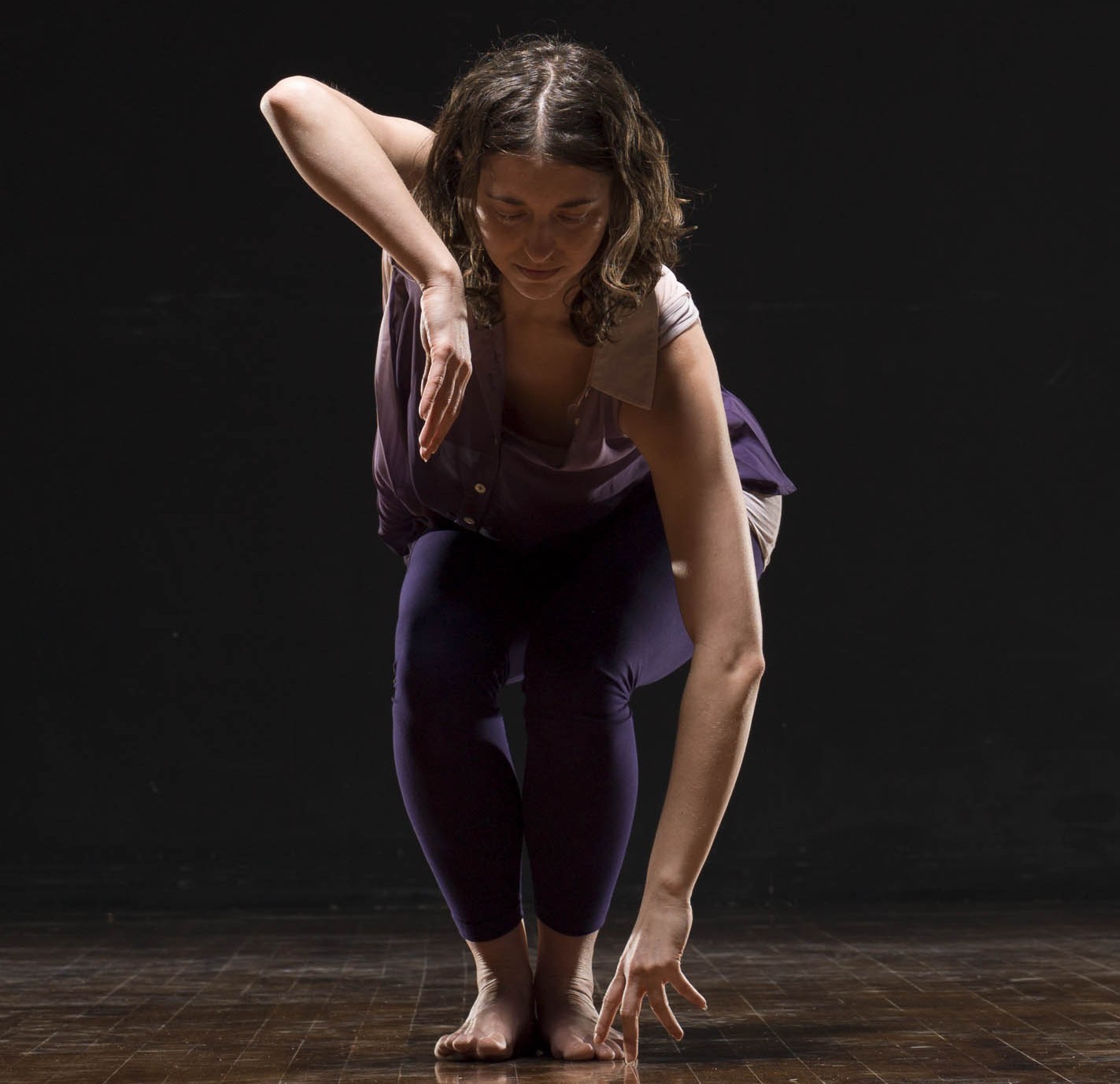jessica marasa, jewel tones: blue @ links hall, 25 May 2015.
Jessica Marasa’s Jewel Tones series at Links Hall responds to a line from the last teachings of Buddha: “Make of yourself a light.” Over the course of the year, she is presenting a series of dance collaborations with each one focusing on one color in the light spectrum. Together, the performances use the body, movement, sound, stage lighting, and occasionally a few props, to investigate what light does and, in a more meditative way, to ask what light is, exactly.
On Monday night, May 25, the focus was on blue. Marasa organized a spontaneous collaboration between herself and dancer Onye Ozuzu along with percussionist Frank Rosaly and reedist Keefe Jackson. In her notes for the performance, Marasa explained that she associates blue with memory and with purification. Blue as the sky and blue as the ocean. Blue as a backdrop. Blue as the depths of space and blue as the feeling of time’s expansive sweep. It was, for her, a good color to be exploring on Memorial Day weekend.
While blue framed the evening as a whole, the performance itself brought out the distinctiveness of each of the performers. Blue saturated the background, but Marasa, Ozuzu, Rosaly, and Jackson each took the color in particular directions.
Marasa and Ozuzu are quite different movers with training in different traditions: Marasa is a thoroughly contemporary dancer who performs with Molly Shanahan’s Mad Shak and Ayako Kato’s Art Human Unionscape. Ozuzu combines ballet with West African dance. Both took the circle, the spiral, the swirl, like a Milky Way galaxy, as the starting point for their movement. The circle became a guiding architecture for their improvisations. From there, Marasa tended to emphasize a hesitancy, a tentativeness, a kind of thinking woman’s form of dance. Focused on the upper parts of the body—arms stretched out—her movements reached along the arcs and curves of blue. She made of herself a stillness. Sometimes it was almost as if we were watching her watching herself dance. Blue on blue. Ozuzu, by contrast, explored footwork as well as the upper body. Toward the end of the piece, she and percussionist Rosaly engaged in a magnificent duet between drums and stomping. The sounds seemed to dance off Rosaly’s fingertips and Ozuzu’s feet made music. This was blue in action, blue as velocity even when dancing in place, blue moving into the ground and up to the sky all at ee. Blue under arch and heel and toe. Blue compressed. Blue expanding. Blue from the earthworm to the universe. Blue as breath. Perhaps it was even, to borrow from Albert Murray, stomping the blues.
As Ozuzu and Rosaly’s duet suggests, one wonderful aspect of Blue was the blurring of lines between the musicians and dancers (something that Blue shares with other recent works such as Maud Le Plaudec’s Democracy or eighth blackbird’s performance of Amy Beth Kirsten’s Colombine’s Paradise Theatre). Sometimes the dancing even extended to objects. In addition to his drum kit, Rosaly’s percussive equipment was spread around the stage, wrapped up in brown butcher paper. Out of one piece of paper emerged a cymbal, which Rosaly spun across the floor. Not only Marasa and Ozuzu, Rosaly and Jackson, but even the cymbal became a performer in the dance.
At one point, Jackson lay down on the floor as he continued to play the bass clarinet and Marasa danced over him, eventually collapsing on top of him. Music and dance fused again—in a scene of blue at once defeated and, as Marasa rose again and eventually joined Ozuzu in a duet, triumphant.
Outside, after the performance, the setting sun created a brilliant violet sky over springtime Chicago, as if Marasa had planned it at this spontaneous exploration of blue’s linkages of deep interiors and vast infinity.
